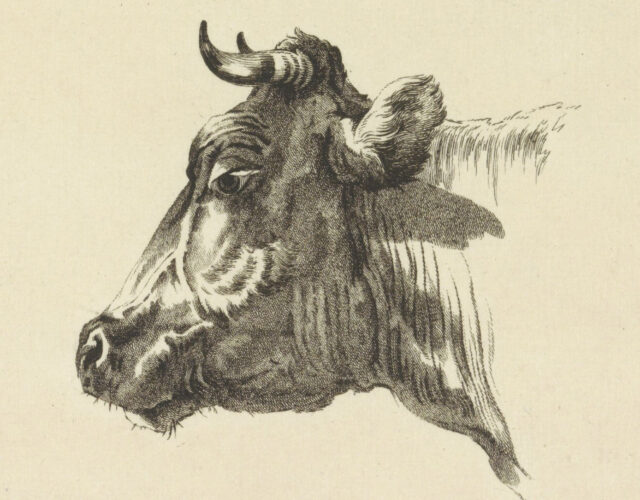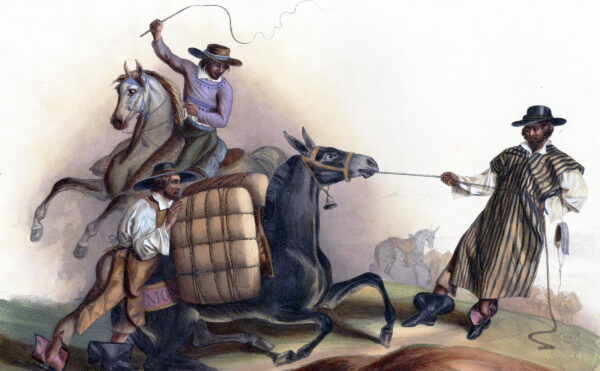In 2016, in an effort to control methane emissions, California passed a law to regulate cow farts. The move produced snickers in some quarters, but cattle farmers weren’t laughing. One industry spokesman raised the possibility that regulating flatulence could murder cows. “By nature’s design, [cows] pass lots of gas,” he protested. “Quite frankly, we want them to pass gas so they don’t explode.”
It sounded alarming—exploding cows! But the state had sound reasons for regulating cattle digestion. And while cows can indeed explode (sort of), it turns out the gases involved in such ruptures have nothing to do with methane.
A cow’s rumen—the first of its four stomachs—is designed to digest grasses. Unfortunately cows also love to graze on legumes, such as clover and alfalfa, which ferment during digestion and produce excess carbon dioxide. Cows normally belch this CO2 out, but sometimes it builds up too quickly to eliminate, especially if undigested food blocks the exit. Even worse, certain proteins in legumes can react with chemicals in the rumen to produce a thick foam that traps the gas, causing the rumen to swell. It’s already a large organ—it can hold 50 gallons of cud—but in this case it balloons to truly gargantuan sizes, a condition called cattle bloat.
Swallowing mineral oil or detergents can break down the foam, but if that remedy fails, the animals suffer. In extreme cases the pain gets so acute they’ll start kicking their own bellies in desperation. Eventually the pressure buildup kills them by crushing their lungs or heart—or by bursting their rumens. As a last-ditch effort to save their livestock, farmers sometimes have to stab the cows’ bloated flanks with a knife or nail to let the fetid gas whoosh out.
So, yes, cows can “explode” if they eat the wrong foods. But the California measure was targeting methane, which cows produce no matter what they eat.
Methane is a potent greenhouse gas—molecule for molecule it traps 25 times more heat than CO2—and the state wants to slash methane emissions 40% by 2030. Cows were an obvious target because they belch and fart prodigious amounts, up to 600 liters every day. (Mostly belch: burps account for 95% of their methane emissions.) Multiply that by 1.5 billion, the rough number of cattle on Earth, and you can see the scope of the problem.
As for how to cut cow emissions—well, that’s the tricky part. Scientists in Argentina have fitted cows with special backpacks to vacuum up methane at the source. (It looks exactly as silly as it sounds.) More realistically, scientists have turned to food chemistry. Oregano contains a compound called carvacrol that selectively kills methanogens, the microbes that generate methane inside cow guts. Adding oregano to cow feed could reduce the amount of methane cows release. Similarly, seaweed contains a compound called bromoform (CHBr3) that reacts with vitamin B12 inside methanogens and disrupts key enzymes. In one study feed that contained just 2% seaweed reduced methane emissions by 70%.
Unfortunately, feed solutions are only temporary since methanogen populations can bounce right back if you don’t keep supplementing the food. More permanent solutions might include giving cows methanogen vaccines or transplanting into their guts genetically engineered microbes that produce less methane. Regardless, farmers have pragmatic reasons to embrace such schemes. In producing methane, the microbes siphon off roughly 7% of the energy in feed. Eliminate the methanogens, and the cows can use that energy to add bulk or make more milk. Everyone wins.
Or farmers could embrace something truly radical. Chemists in England have recently developed a cheap, one-step process that uses plasmas to convert CO2 and methane into liquid chemicals, such as methanol, ethanol, and acetic acid. Plasmas are a special state of matter where electrons come unmoored from their home molecules and roam about freely. (Plasmas normally form only at high temperatures, but these chemists employed so-called nonthermal plasmas, which form at room temperature.) In interacting with the methane and CO2, these free electrons radicalize the gases and kick off various chemical reactions that normally require far more energy to occur.
This process would not only provide useful chemicals; it could also—as part of a larger carbon-capture scheme—help strip CO2 and methane out of the air, gobbling up tons and tons of these greenhouse gases. So in conflating CO2 and methane perhaps the peeved California ranchers were more right than they realized. These gut gases are distinct, but together they might just hold the key to solving a much bigger problem than some supposedly exploding cows.




